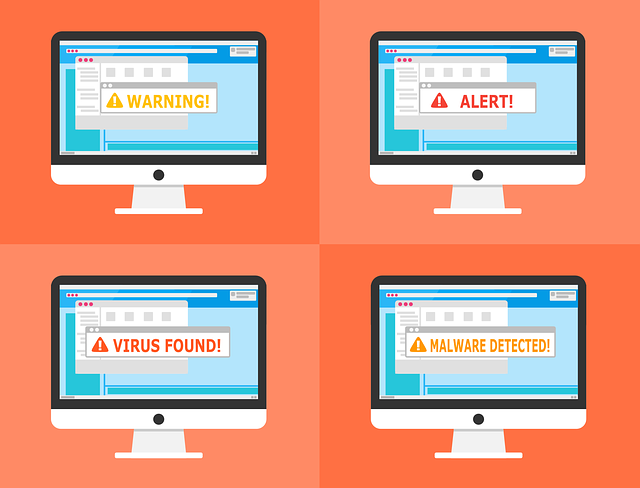Are you afraid of computer viruses?
Malware and viruses are a significant threat to your computer’s security, privacy, and functionality. They can cause data loss, slow down your system, and even steal sensitive information like passwords and financial data.
Protecting your computer from these threats is crucial, and there are several things you can do to safeguard your system. In this blog, I’ll explore some of the best ways to protect your computer from malware and viruses.
Install Antivirus Software
Antivirus software is an essential tool for protecting your computer from malware and viruses.
It can detect and remove malicious software from your system, preventing it from causing damage. Many antivirus programs also include features like email scanning, web protection, and network security, which can further enhance your computer’s security.
When choosing antivirus software, it’s essential to look for a reputable and reliable program.
Many well-known companies offer antivirus software, such as Norton, McAfee, and Avast. These programs often come with a free trial, allowing you to test their effectiveness before committing to a purchase.
It’s also essential to keep your antivirus software up-to-date, as new threats are constantly emerging, and updates help your software stay ahead of them.
Use a Firewall
A firewall is a security system that monitors and controls network traffic to and from your computer. It can prevent unauthorized access to your system, and block malicious software from entering your network.
Windows and Mac computers come with built-in firewalls, but there are also third-party options available that offer more advanced features.
It’s essential to enable your firewall and keep it up-to-date, as new threats can often bypass older security measures.
You can configure your firewall to allow or block specific types of traffic, depending on your needs. For example, you may want to block certain websites or applications from accessing your computer, while allowing others to connect freely.
Be Careful When Opening Emails and Attachments
Many malware and viruses are spread through email attachments or links to malicious websites.
It’s essential to exercise caution when opening emails or clicking on links, especially from unknown senders. Be wary of messages that ask you to download software, click on a link, or enter personal information.
To protect yourself from these threats, you can use a spam filter to automatically detect and block suspicious messages. Most email services and programs have built-in spam filters, but you can also use third-party options for more advanced protection.
If you receive an email from someone you don’t know, it’s best to delete it or mark it as spam, rather than clicking on any links or downloading attachments.
Keep Your Operating System and Programs Up-to-Date
Software updates often include security patches that address known vulnerabilities and fix bugs that could be exploited by malicious software.
It’s essential to keep your operating system, applications, and browser up-to-date to ensure that you have the latest security features and protections.
Many programs offer automatic updates, which can simplify the process of keeping your software current. You can also check for updates manually, either through the program’s settings or by visiting the developer’s website.
Also uninstall any programs or plugins that you no longer use, as they can pose a security risk.
Create Strong Passwords and Use Two-Factor Authentication
Using strong passwords can help prevent unauthorized access to your computer and protect your sensitive information.
Use a unique password for each account and to avoid using easily guessable phrases, such as your name or birthdate. Instead, use a strong password with at least eight characters long and contains a mix of letters, numbers, and special characters.
Two-factor authentication adds an extra layer of security by requiring a second form of verification, such as a security code sent to your phone.
Many password managers are available, which can help you generate and store strong passwords for all of your accounts. These programs often come with features like auto-fill and auto-login, which can simplify the process of logging into your accounts securely.
Be Careful When Downloading Files and Programs
Another way malware and viruses can enter your computer is through downloads.
Be careful when downloading files and programs from the internet, especially from peer-to-peer networks and free file-sharing sites.
Always download files and programs from reputable sources and make sure to scan them with anti-virus software before opening them.
Be Careful on Social Networking Sites
Social networking sites are a breeding ground for malware and viruses. Scammers and hackers use these sites to spread malware and steal personal information.
Be careful when clicking on links and downloading files from social networking sites.
Also, be mindful of the information you share on these sites, as personal information can be used for identity theft.
Back Up Your Data
Lastly, it is important to back up your data regularly.
In the event that your computer is infected with malware or a virus, your data may be lost or compromised. By backing up your data, you can restore it in the event of a security breach.
Use VPN On Public Network
Public Wi-Fi networks, such as those found in coffee shops, airports, and hotels, are often unsecured, which makes it easy for cybercriminals to access your personal information.
To protect yourself when using public Wi-Fi, use a virtual private network (VPN) to encrypt your internet connection. Additionally, avoid accessing sensitive information, such as online banking or credit card information, while connected to a public Wi-Fi network.
Awareness
Another important aspect is to be aware of the latest threats and trends in malware and viruses. Stay informed by subscribing to security newsletters, following security experts on social media, and visiting reputable security websites.
This will help you stay up-to-date on the latest threats and best practices for protecting your computer.
